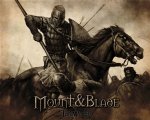Erechel
Explorer
There is no book that I remember that changed that rule whatsoever. We play with every official book, and that hasn't come up a single time. We don't tend to use a lot of Sage Advice.The damage numbers do seem off, remember RAW you can’t give yourself advantage anymore with Shield Master, it’s been changed.
But also, all you are doing is damage, and proning people for others to get advantage. As a fighter, that is your job though, so you need to put out a lot.
You also need to be in their making yourself a target, you have a deeper HP pool with armor and better HD.
Your monk exceeds your “effective” damage, as stunning a creature ups damage tremendously and saves the group from any damage that creature would do. Don’t forget that, and work together with that knowledge.
You are limited of course to proning one size larger, what makes open hand monks so awesome is they can prone or shove any size creature.
He is an Elemental monk. But yes, he is amazing. We tend to be on par, although I have a lot more resistance. We tend to move a lot, though. But remember that maneuvers aren't damage only. I use Lunging Attack, Precision Strike and, mostly, Menacing Attack, that frightens my foe if it doesn't succeed on a DC 15 WST. That maneuver is simply amazing.
Remember that Battlemasters also double the SD with a crit, and also you decide when to use your resources. it is not unusual that I end making 2d12+2d8+6 damage.Playing a SM Paladin now, I still use the old rule myself though. SM is quite good, but subtle, it’s better for Paladins since advantage means double the chance to land a doubled smite. Prones are great with Spirit Guardians, so I took Crown Oath, or multi-attackers like a monk.
The other benefits of SM are good though.
I'm not flying with my mount. In fact, that's why I'm complaining. If the Bardlock would be a Warlock or Bard, I could be flying on horsebackI also can’t bring a steed into a lot of places, especially when you get the better ones. Flying into town on a Pegasus just screams for attention, either good or bad.
 . And yes, there are places where my horse can't be used effectively. But, if a troll enters in a dungeon, a horse too. And yes, the horses tend to die a lot. That's why I have 4 horses and one of my (many) skills is Animal Handling, and I'm trying to forge a barding (until now, I have only strapped 3 small shields on the horses). But remember that a lance has reach. Many people forget how useful a lance is. And a warhorse has 60 feet of movement, and can only take the Dash, Disengage and Dodge actions. With a lance, I never enter in a position where my horse receives an opportunity attack, and retire hastily.
. And yes, there are places where my horse can't be used effectively. But, if a troll enters in a dungeon, a horse too. And yes, the horses tend to die a lot. That's why I have 4 horses and one of my (many) skills is Animal Handling, and I'm trying to forge a barding (until now, I have only strapped 3 small shields on the horses). But remember that a lance has reach. Many people forget how useful a lance is. And a warhorse has 60 feet of movement, and can only take the Dash, Disengage and Dodge actions. With a lance, I never enter in a position where my horse receives an opportunity attack, and retire hastily. If the enemy isn't prone (disadvantage on its attacks) or dead, it has to take the Dash action only to come at 10 feet of me.
And yes, we fight as a group (I'm the combat leader of the party), but the bardlock mostly falls behind us. He usually Hex my enemies so I have advantage on the Athletics checks.
As a side note, I'm eager to use my tinker and smith tools to create a flamethrower with alchemic fire (the byzantines had flamethrowers, after all). Overall, I'm a money sink, but very effective.
Think of my character as a Mount&Blade chevallier.

Last edited:


